Posted by kerryjones
Do your link building results look something like this?
- Start doing outreach
- Get links
- Stop doing outreach
- No more links
Everyone talks about the long-term benefits of using content marketing as part of a link building strategy. But without the right type of content, your experience may be that you stop earning links as soon as you stop doing outreach.
In this sense, you have to keep putting gas in the car for it to keep running (marketing “gas” = time, effort, and resources). But what if there was a way to fill up the car once, and that would give it enough momentum to run for months or even years?
An example of this is a salary negotiations survey we published last year on Harvard Business Review. The study was picked up by TechCrunch months after we had finished actively promoting it. We didn’t reach out to TechCrunch. Rather, this writer presumably stumbled upon our content while doing research for his article.
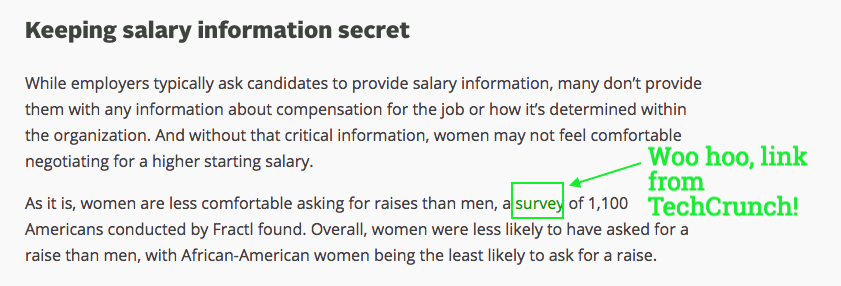
So what’s the key to long-term links? Content that acts as a source.
The goal is to create something that people will find and link to when they’re in need of sources to cite in content they are creating. Writers constantly seek out sources that will back up their claims, strengthen an argument, or provide further context for readers. If your content can serve as a citation, you can be in a good position to earn a lot of passive links.
Read on for information about which content types are most likely to satisfy people in need of sources and tips on how to execute these content types yourself.
Original research and new data
Content featuring new research can be extremely powerful for building authoritative links via a PR outreach strategy.
A lot of the content we create for our clients falls under this category, but not every single link that our client campaigns earn are directly a result of us doing outreach.
In many cases, a large number of links to our client research campaigns earn come from what we call syndication. This is what typically plays out when we get a client’s campaign featured on a popular, authoritative site (which is Site A in the following scenario):
- Send content pitch to Site A.
- Site A publishes article linking to content.
- Site B sees content featured on Site A. Site B publishes article linking to content.
- Site C sees content featured on Site A. Site C publishes article linking to content.
- And so on…
So, what does this have to do with long-term link earning? Once the content is strategically seeded on relevant sites using outreach and syndication, it is well-positioned to be found by other publishers.
Site A’s content functions as the perfect citation for these additional publishers because it’s the original source of the newsworthy information, establishing it as the authority and thus making it more likely to be linked to. (This is what happened in the TechCrunch example I shared above.)
Examples
In a recent Experts on the Wire podcast, guest Andy Crestodina talked about the “missing stat.” According to Andy, most industries have “commonly asserted, but rarely supported” statements. These “stats” are begging for someone to conduct research that will confirm or debunk them. (Side note: this particular podcast episode inspired this post – definitely worth a listen!)
To find examples of content that uncovers a missing stat in the wild, we can look right here on the Moz blog…
Confirming industry assumptions
When we did our native advertising versus content marketing study, we went into it with a hypothesis that many fellow marketers would agree with: Content marketing campaigns perform better than native advertising campaigns.
This was a missing stat; there hadn’t been any studies done proving or debunking this assumption. Furthermore, there wasn’t any publicly available data about the average number of links acquired for content marketing campaigns. This was a concrete data point a lot of marketers (including us!) wanted to know since it would serve as a performance benchmark.

As part of the study, we surveyed 30 content marketing agencies about how many links the average content marketing campaign earned, in addition to other questions related to pricing, client KPIs, and more.

After the research was published here on Moz, we did some promotion to get our data featured on Harvard Business Review, Inc, and Marketing Land. This data is still being linked to and shared today without us actively promoting it, such as this mention on SEMRush’s blog and this mention on the Scoop It blog (pictured below).
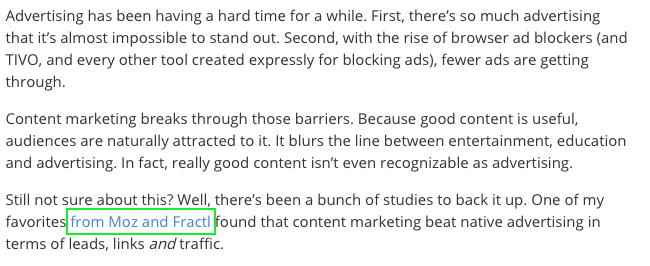
To date, it’s been featured on more than 80 root domains and earned dozens of co-citations. It’s worth noting that this has been about far more than acquiring high-quality links; this research has been extremely effective for driving new business to our agency, which it continues to do to this day.
Debunking industry assumptions
But research doesn’t always confirm presumptions. For example, Buzzsumo and Moz’s research collaboration examined a million online articles. A key finding of their research: There was no overall correlation between sharing and linking. This debunked a commonly held assumption among marketers that content that gets a lot of shares will earn a lot of links, and vice versa. To date, this post has received an impressive 403 links from 190 root domains (RDs) according to Open Site Explorer.
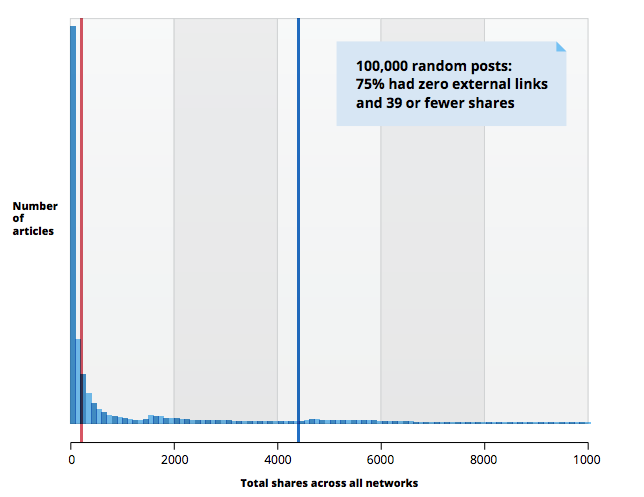
How to use this strategy
To find original research ideas, look at how many backlinks the top results have gotten for terms like:
- [Industry topic] report
- [Industry topic] study
- [Industry topic] research
Then, using the MozBar, evaluate what you see in the top SERPs:
- Have the top results gotten a sizable number of backlinks? (This tells you if this type of research has potential to attract links.)
- Is the top-ranking content outdated? Can you provide new information? (Try Rand’s tips on leveraging keywords + year.)
- Is there a subtopic you could explore?
Additionally, seeing what has already succeeded will allow you to determine two very important things: what can be updated and what can be improved upon. This is a great place to launch a brainstorm session for new data acquisition ideas.
Industry trend and benchmark reports
Sure, this content type overlaps with “New Research and Studies,” but it merits its own section because of its specificity and high potential.
If your vertical experiences significant change from one year, quarter, or month to the next, there may be an opportunity to create recurring reports that analyze the state of your industry. This is a great opportunity to engage all different kinds of brands within your industry while also showcasing your authority in the subject.
How?
People often like to take trends and add their own commentary as to why trends are occurring or how to make the most of a new, popular strategy. That means they’ll often link to your report to provide the context.
And there’s an added promotional benefit: Once you begin regularly publishing and promoting this type of content, your industry will anticipate future releases.
Examples
HubSpot’s State of Inbound report, which features survey data from thousands of HubSpot customers, has been published annually for the last eight years. To date, the URL that hosts the report has links from 495 RDs.
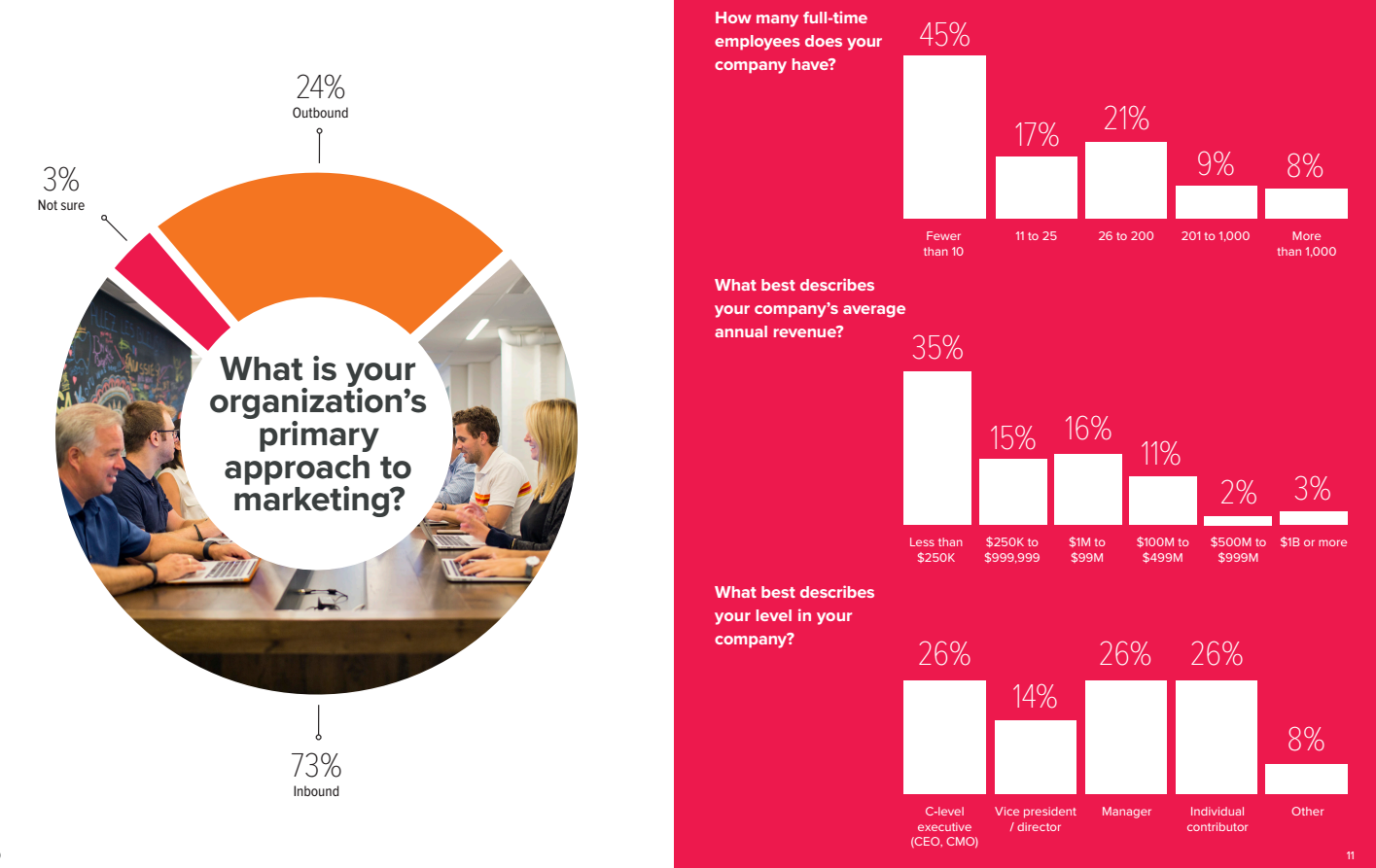
Content Marketing Institute and MarketingProfs have teamed up for the last seven years to release two annual content marketing benchmark reports. The most recent report on B2B content marketing has earned links from 130 RDs. To gather the data, CMI and MarketingProfs emailed a survey to a sample of marketers from their own email marketing lists as well as a few lists from partner companies.
http://ift.tt/2cV19Ek
In addition to static reports, you can take this a step further and create something dynamic that is continually updated, like Indeed’s Job Trends Search (171 RDs) which pulls from their internal job listing data.

How to use this strategy
Where can you find fresh industry data? Here are a few suggestions:
Survey your customers/clients
You have a whole pool of people who have been involved in your industry, so why not ask them some questions to learn more about their thoughts, needs, fears, and experiences?
Talking directly to customers and clients is a great way to cut through speculation and discover exactly what problems they’re facing and the solutions they’re seeking.
Survey your industry
There are most likely companies in your industry that aren’t direct competitors but have a wealth of insight to provide to the overall niche.
For example, we at Fractl surveyed 1,300 publishers because we wanted to learn more about what they were looking for in content pitches. This knowledge is valuable to any content marketers involved in content promotions (including ourselves!).
Ask yourself: What aspect of your industry might need some more clarification, and who can you reach out to for more information?
Use your internal company data
This is often the easiest and most effective option. You probably have a ton of interesting data based on your interactions with customers and clients that would benefit fellow professionals in your industry.
Think about these internal data sets you have and consider how you can break it down to reveal trends in your niche while also providing actionable insights to readers.
Curated resources
Research can be one of the most time-consuming aspects of creating content. If someone has pulled together a substantial amount of information on the topic in one place, it can save anyone else writing about it a lot of time.
If you’re willing to put in the work of digging up data and examples, curated resource content may be your key to evergreen link building. Let’s look at a few common applications of this style of content.
Examples
Collections of statistics and facts
Don’t have the means to conduct your own research? Combining insightful data points from credible sources into one massive resource is also effective for long-term link attraction, especially if you keep updating your list with fresh data.
HubSpot’s marketing statistics list has attracted links from 963 root domains. For someone looking for data points to cite, a list like this can be a gold mine. This comprehensive data collection features their original data plus data from external sources. It’s regularly updated with new data, and there’s even a call-to-action at the end of the list to submit new stats.
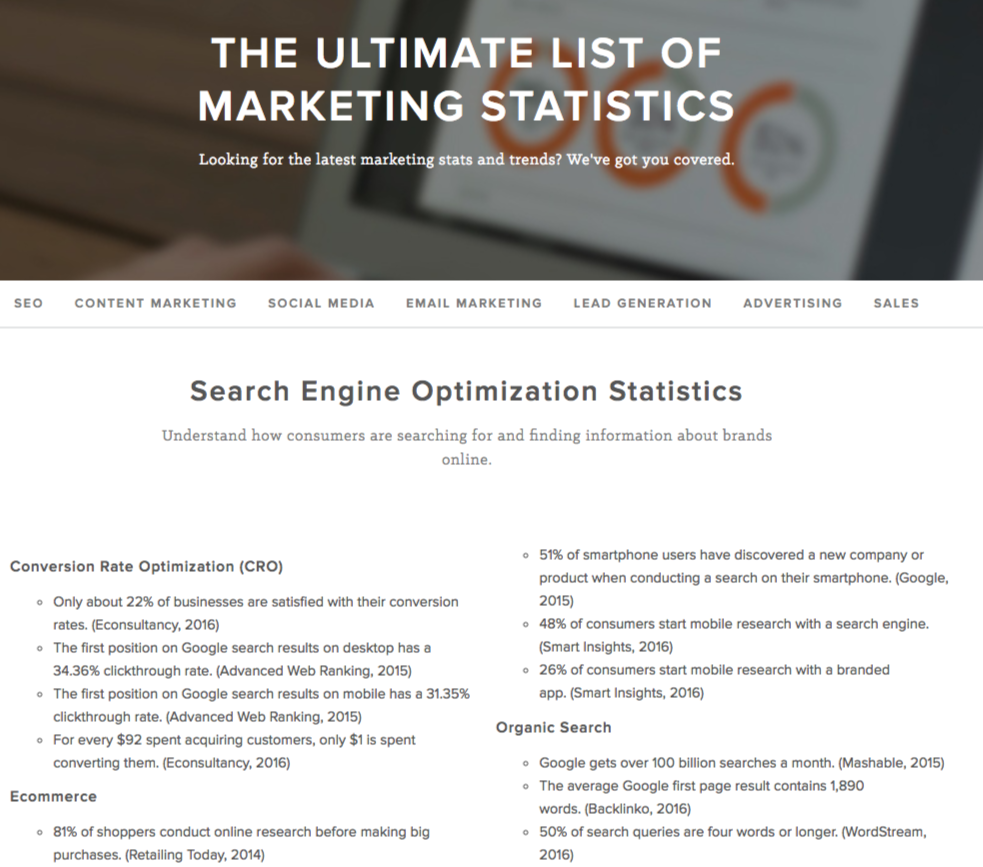
Your list doesn’t need to be as broad as the HubSpot example, which covers a wide range of marketing topics. A curated list around a more granular topic can work, too, such as this page filled with mobile email statistics (550 RDs).

Concrete examples
Good writers help readers visualize what they’re writing about. To do this, you need to show concrete evidence of abstract ideas. As my 7th grade English teacher used to tell us: show, don’t tell.
By grouping a bunch of relevant examples in a single resource, you can save someone a lot of time when they’re in need of examples to illustrate the points they make in their writing. I can write thousands of words about the idea of 10x content, but without showing examples of what it looks like in action, you’re probably going to have a hard time understanding it. Similarly, the bulk of time it took me to create this post was spent finding concrete examples of the types of content I refer to.
The resource below showcases 50 examples of responsive design. Simple in its execution, the content features screenshots of each responsive website and a descriptive paragraph or two. It’s earned links from 184 RDs.

Authority Nutrition’s list of 20 high-protein foods has links from 53 RDs. If I’m writing a nutrition article where I mention high-protein foods, linking to this page will save me from researching and listing out a handful of protein-rich foods.
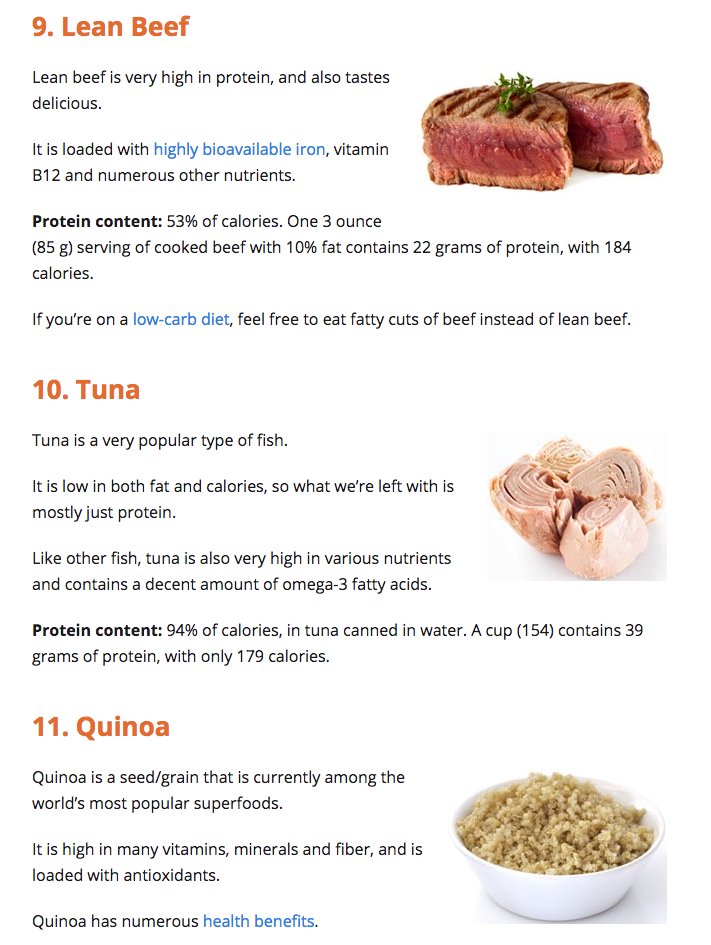
How to use this strategy
The first step is to determine what kind of information would be valuable to have all in one place for other professionals in your industry to access.
Often times, it’s the same information that would be valuable for you.
Here are some ways to brainstorm:
- Explore your recent blog posts or other on-site content. What needed a lot of explaining? What topics did you wish you had more examples to link to? Take careful note of your own content needs while tackling your own work.
- Examine comments on other industry articles and resources. What are people asking for? This is a gold mine for the needs of potential customers. You can take a similar approach on Reddit and Quora.
- What works for other industries that you can apply to your own? Search for terms like the following to see what has been successful for other niches that you can apply to yours:
- [Industry topic] examples
- types of [industry topic]
- list of [Industry topic]
- [Industry topic] statistics OR stats
- [Industry topic] facts
No matter which way you choose to proceed, the time investment can help you garner many links down the line.
Beginner content
Every niche has a learning curve, with various words, concepts, and ideas being foreign to a beginner.
Content that teaches noobs the ins and outs of your vertical has long-term linking potential. This type of content is popular for citations because it saves the writer from explaining things in their own words. Instead, they can link to the expert’s explanation.
And the best part is you can tap your internal experts to provide great insights that can serve as the foundation for this type of content.
Examples
101 Content
Moz’s Beginner’s Guide to SEO is a master class in how comprehensive beginner-level content becomes a link magnet. Not only does the guide have backlinks from more than 1,700 RDs, it also edges out the home page as the most-trafficked page on the site, according to SEMrush.
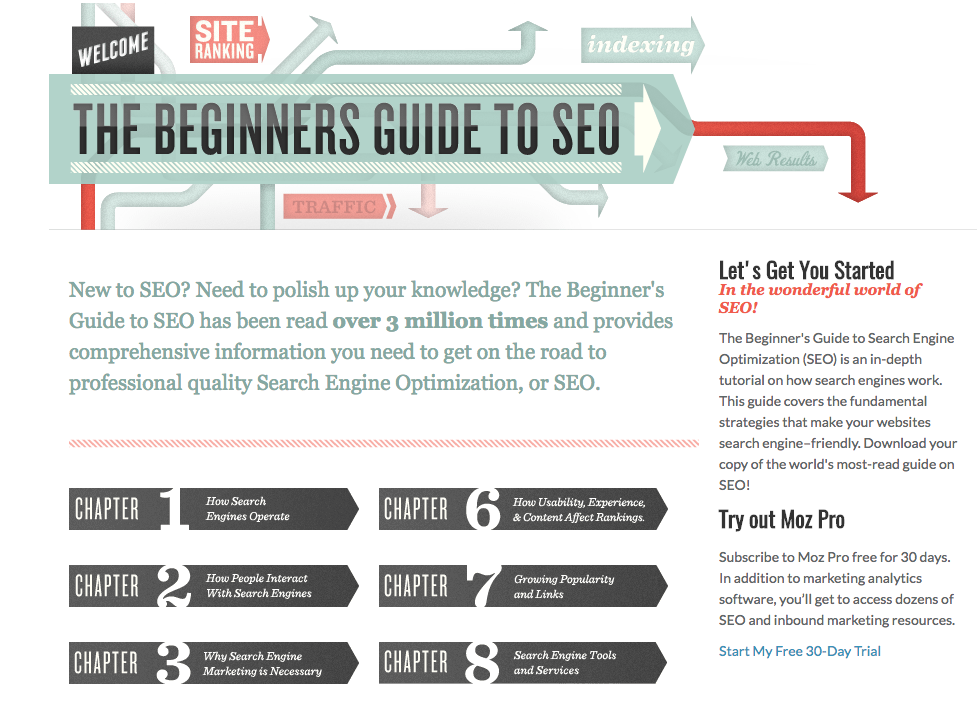
“What is…?”
Beginner content need not be as massive and thorough as the Moz guide to be linkable. It can be as simple as defining an industry term or concept.
Moz’s meta description page, which has backlinks from 244 RDs, is a solid example of an authoritative yet simple answer to a “what is?” query.
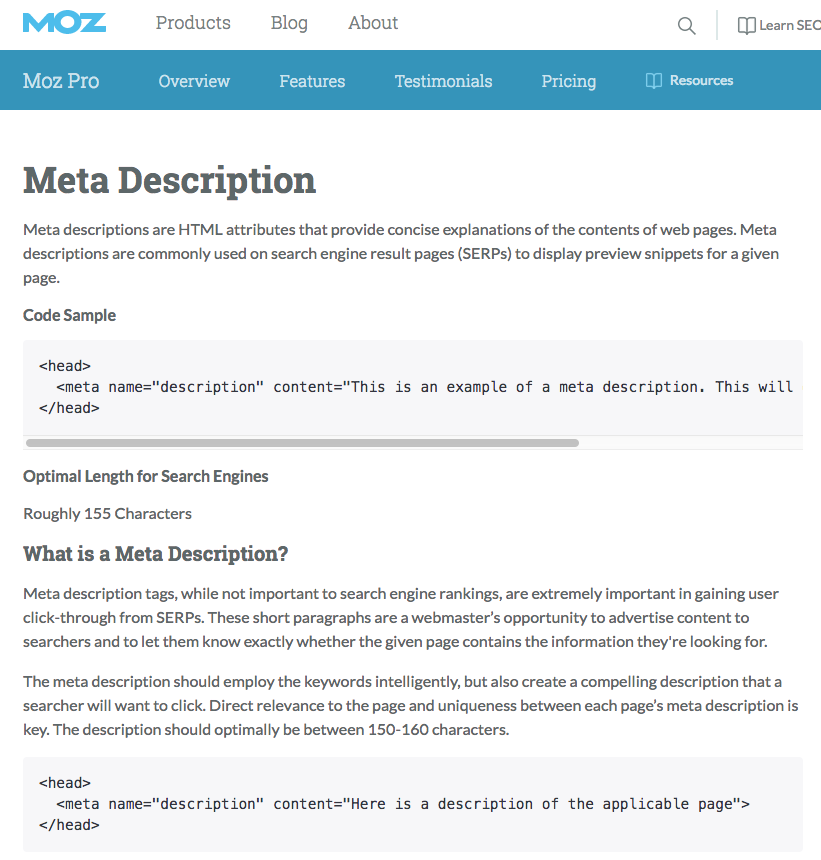
Another example is the first result in Google for the query “what is the Paleo diet,” which has 731 links from 228 RDs. It’s not a 10,000-word academic paper about the paleo diet. Rather, it’s a concise answer to the question. This page has served as an excellent source for anyone writing about the Paleo diet within the last several years.
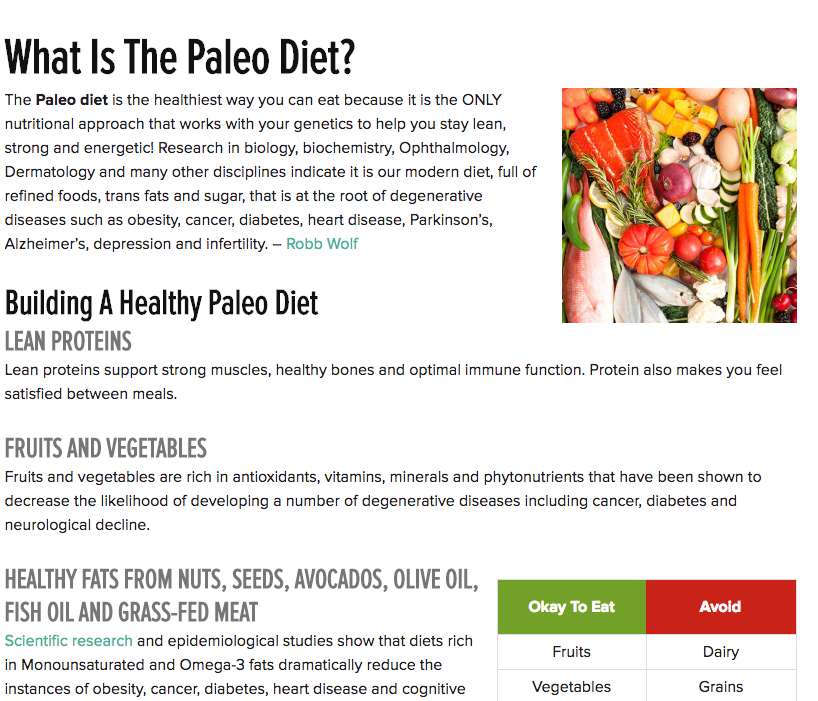
If a lot of adequate top-level, definition-style content already exists about topics related to your vertical, consider creating content around emerging terms and concepts that aren’t yet widely understood, but may soon be more mainstream.
The perfect example of this? Creating a definitive explanation about content marketing before the entire world knew what content marketing meant. Case in point: Content Marketing Institute’s “What is Content Marketing?” page has amassed an impressive from 12,462 links from 1,100 root domains.

How to use this strategy
Buzzsumo recently released a new tool called Bloomberry which scours forums including Reddit and Quora for questions being asked about a keyword. You can search by time period (ex. questions asked within the last 6 months, all-time results, etc.) and filter by source (ex. only see questions asked in Reddit).
Use Bloomberry to see what beginner questions are being asked about your keyword/topic. Keyword ideas include:
- [Industry topic] definition
- How does [industry topic] work
- [Industry topic] guide
- What is [industry topic]
After doing the search, ask yourself:
- What questions keep coming up?
- How are these common questions being answered?
Bloomberry is also useful for spotting research opportunities. Within the first few results for “SaaS” I found three potential research ideas.

Pro tip: Return to these threads and provide an answer plus link to your content once it’s published.
Yes, you still need to promote your content
Don’t mistake this post as a call to stop actively doing outreach and promotion to earn links. Content promotion should serve as the push that gives your content the momentum to continue earning links. After you put in the hard work of getting your content featured on reputable sites with sizable audiences, you have strong potential to organically attract more links. And the more links your content has, the easier it will be for writers and publishers in need of sources to find it.
What types of content do you think are best for earning citation links? I’d love to hear what’s worked for you – please share your experiences in the comments below.
Sign up for The Moz Top 10, a semimonthly mailer updating you on the top ten hottest pieces of SEO news, tips, and rad links uncovered by the Moz team. Think of it as your exclusive digest of stuff you don’t have time to hunt down but want to read!

from Moz Blog http://ift.tt/2moAuYX


from WordPress http://ift.tt/2lQK8jP
